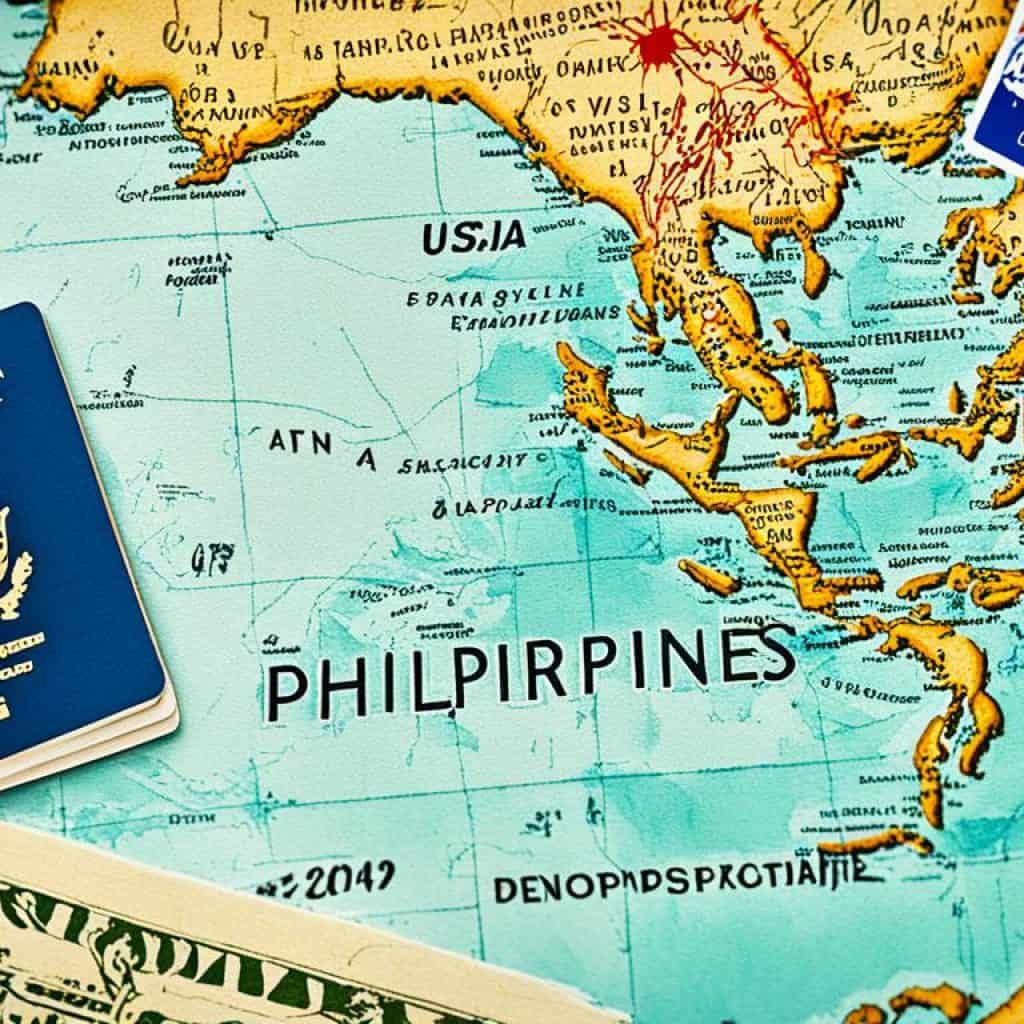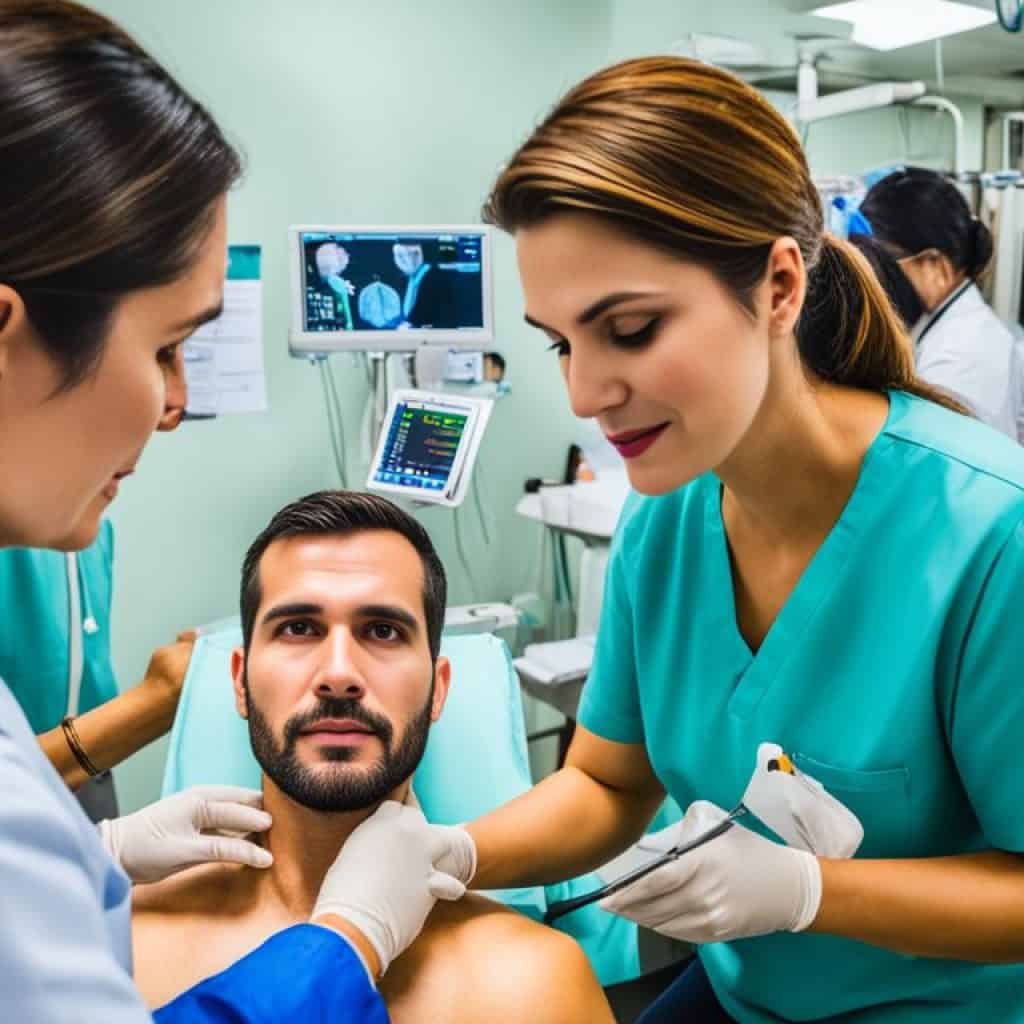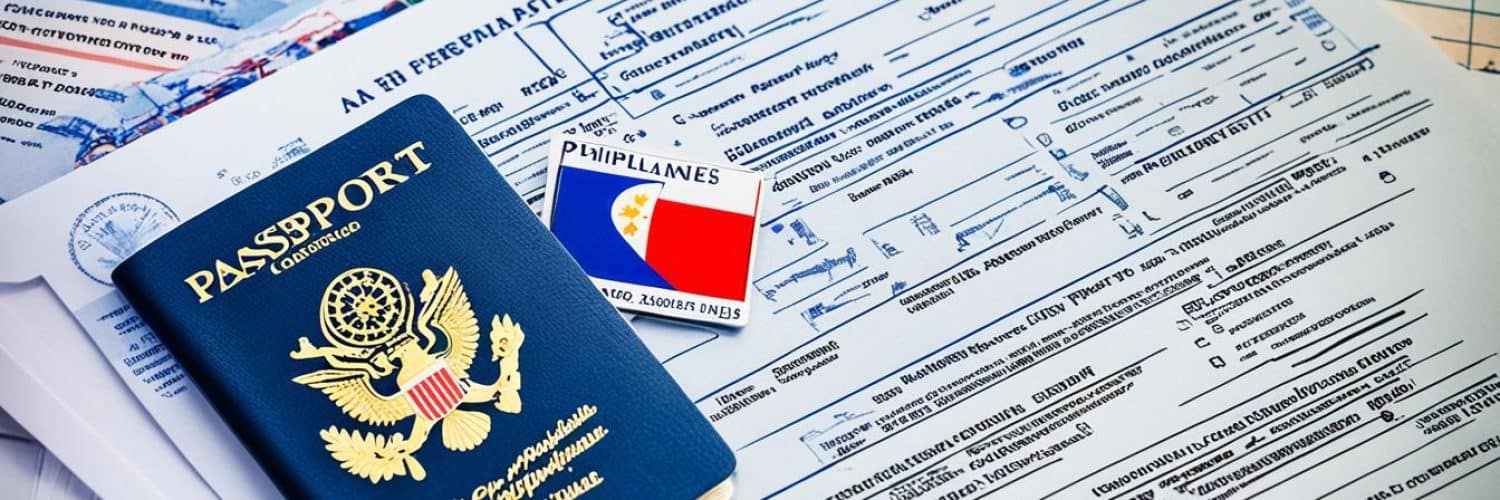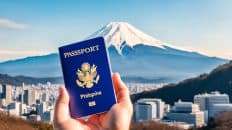Are you thinking about a trip to the Philippines? You might find the visa requirements for US citizens surprising. You need to know about the necessary documents, the process of applying, and the different visas available. Let’s explore the interesting facts about Philippines visa requirements for US citizens together.
Key Takeaways:
- US citizens visiting the Philippines need to fulfill specific visa requirements.
- The visa application process includes gathering documents, completing an application form, and paying the visa fee.
- There are different types of visas available, such as tourist visas, business visas, and student visas.
- The duration of stay allowed may vary depending on the type of visa obtained.
- It is important to comply with entry requirements and follow safety precautions while traveling in the Philippines.
Philippine Visa Policy
The Philippines has a visa policy for foreign nationals. It shows how to get a visa and who can travel without one. If you are from the United States and want to visit, knowing this policy is vital.
Certain country citizens, including the United States, might travel to the Philippines without a visa. But, visa-free does not mean you will definitely get in. Immigration officials can stop you from entering if you don’t meet all requirements or they have concerns.
US citizens must know the tourist visa needs for a smooth entry. You need a valid passport, proof of financial ability, accommodation details, and a return or onward ticket.
Remember, having a valid visa doesn’t mean you will get into the Philippines for sure. The final say is with the immigration officers.
Applying for a visa includes filling out an application form. You must give your name, nationality, travel purpose, and how long you plan to stay. It’s crucial to fill this out correctly and provide all needed information.
The process also requires paying a visa fee. US citizens should check the fee amount and pay it during the application. Not paying can cause delays or your application’s rejection.
After applying, submit it to the Philippine Embassy or Consulate where you live. Processing times vary, so apply well before your trip.
In summary, the Philippine visa policy has rules for visa-free travel and getting a tourist visa. US citizens looking to visit should learn these policies and meet the requirements. This way, you can have a worry-free trip to this stunning Southeast Asian place.
Visa Types and Duration of Stay
If you’re a US citizen looking to visit the Philippines, you have different visa options. These options depend on your visit’s purpose, like tourism, business, or studying. The Philippines has visa types for each of these needs.
For tourism, the Philippines Tourist Visa is what you need. It lets you stay for up to 59 days. Remember, the immigration officer decides how long you can stay when you arrive. If you want to stay longer, you must apply for an extension at the Bureau of Immigration.
Business travelers should get the Philippines Business Visa. It’s for US citizens who want to do business activities, such as meetings or exploring new opportunities. You can stay for up to 59 days, with a chance to extend if necessary.
Do you want to study in the Philippines? Then, the Philippines Student Visa is required. It’s for enrolling in educational programs. How long you can stay depends on your study program’s duration.
Before you go, make sure you know what each visa type involves. This includes their limits and needs. Whether it’s for fun, business, or school, having the right visa will make your visit smooth and fun.
Visa Application Process
Applying for a visa to the Philippines as a US citizen involves several steps. To ensure a smooth application, follow these steps step by step:
- Gather the necessary documents:
Start by collecting all documents needed for your visa. This list includes:
- A valid passport with at least six months of validity
- A completed visa application form
- A recent passport-size photograph
- Proof of travel itinerary (such as flight reservations)
- Proof of accommodation in the Philippines
- Financial documents to show you have enough money for your stay
- Additional documents, based on your visa type
- Complete the application form:
Accurately fill in the visa application form. Double-check every detail to avoid mistakes.
- Pay the visa fee:
Next, pay the visa fee. The cost varies by visa type and stay length. Check the Philippine Embassy’s official website for current fees.
- Submit the application:
Take your filled form, documents, and visa fee to the nearest Philippine Embassy or Consulate. Submit everything during the set hours. Make sure your documents are in order.
Visa processing times can differ. Apply early to avoid any delays.
| Visa Application Process | Description |
|---|---|
| Step 1: Gather Documents | Collect all necessary documents, like a valid passport, application form, and financial proof. |
| Step 2: Complete Application Form | Fill out the visa application form accurately, including all required info. |
| Step 3: Pay Visa Fee | Pay the fee, which varies with visa type and stay length. |
| Step 4: Submit Application | Submit your form, along with documents and the fee, to the Embassy or Consulate. |
Once your visa is processed and approved, the Philippine Embassy or Consulate will inform you. Check your visa’s details and expiry after receiving it. With your visa, you’re all set for a memorable trip to the Philippines!
Required Documents for Visa Application
When you apply for a visa to the Philippines as a US citizen, certain documents are a must. These include forms that prove you’re allowed to enter the country. It’s crucial to have all your paperwork ready. This prevents delays or rejections in your visa process.
1. Valid Passport
A valid passport is key. It should not be expired. It must have at least six months remaining before it expires. Taking a photocopy of your passport is also a smart move. You should submit this copy with your application.
2. Proof of Accommodation
For your visa, proof of where you’ll stay in the Philippines is needed. This could be hotel bookings or a letter from a friend or family. You need to clearly show where you’ll be living during your visit.
3. Round-Trip Ticket
You also must show a round-trip ticket. This proves you plan to leave the Philippines after your visit. Your ticket can be a reservation or an actual flight ticket. It shows that your stay is temporary.
4. Financial Documents
Showing you have enough money is crucial for your visa. You might need bank statements or pay stubs. These documents prove you can afford your trip.
5. Completed Visa Application Form
A filled-out visa application form is essential. Make sure all info is correct and complete. Checking for mistakes is critical before you submit it.
The documents needed can vary based on the visa type. For the most accurate info, visit the website of the Philippine Embassy or Consulate. This ensures you have everything needed for your visa application.

Having your documents in order makes the visa process smoother. Carefully follow the application steps. Submit everything on time to avoid delays or issues. This can improve your chances of getting the visa you want.
Visa Fees
Applying for a visa to the Philippines involves certain fees for US citizens. The cost may change based on the visa type and stay length. Always check the latest fee schedule and pay during the application.
Knowing the visa fees helps with travel budgeting. This way, US citizens can avoid surprises or delays in getting their visa.
Visa Fee Schedule
The Philippine Embassy or Consulate sets the visa fee schedule for US travelers. Below is a basic list of fees for different visas and stays:
| Visa Type | Fee |
|---|---|
| Tourist Visa (21 days) | $30 |
| Tourist Visa Extension (additional 38 days) | $60 |
| Business Visa (59 days) | $90 |
| Student Visa | $120 |
Remember, these fees might change. Check with the embassy or consulate for the latest info.
Payment Method
You can usually pay the visa fee with cash, money order, or cashier’s check. Personal checks or credit cards might not be accepted. Always verify payment methods beforehand.
Make sure the payment amount is correct and includes any extra fees, if needed. Incorrect payments can cause application delays or rejections.
Receipt and Confirmation
After paying, you’ll get a receipt or confirmation. Keep this document safe as it might be needed later.
The visa fee is just one step in the application. Also, gather all required documents, fill out the form correctly, and submit on time. Being prepared and following the rules helps US citizens successfully get their visa and enjoy their Philippines trip smoothly.
Visa Approval and Entry into the Philippines
Getting a visa approved doesn’t mean you can enter the Philippines for sure. When you arrive, you must show your valid passport, visa, and other documents to the immigration officials. It’s key to meet all entry requirements and listen to the immigration authorities’ instructions.
In the Philippines, you should have your valid passport, visa, and necessary documents ready for the immigration officials. You’ll need to give these documents, possibly offer biometric data, and answer any questions. Being patient and respectful is vital, as immigration officials decide who can enter.
Before going, learn about the entry rules for US citizens. This includes how long your visa lasts, how long you can stay, and any extra rules. Your passport should be valid for six months after you plan to leave. Not meeting these rules could mean you can’t enter and might have to go back.
“Travelers should be prepared to present valid passports and travel documents and provide accurate and truthful information to immigration authorities upon arrival. US citizens, like all travelers, may be subjected to additional screening based on immigration officials’ assessment, which may include an interview to determine the purpose and duration of travel.”
– Embassy of the Republic of the Philippines, Washington, D.C.
Remember, Philippine immigration might ask for more documents or proof you can pay for your stay. This may include plans for returning or going to another country, and where you’ll stay. Having copies of important documents and knowing why you’re visiting are good ideas. This could be for a holiday, business, or something else allowed.
You should also follow any specific directions from the immigration authorities. This might mean filling out forms when you arrive or leave, going through customs checks, declaring items that aren’t allowed, and following quarantine or health rules if needed.
| Entry Requirements | Details |
|---|---|
| Valid Passport | A passport with a validity period of at least six months beyond the intended departure date from the Philippines. |
| Visa | A valid visa issued by the Philippine Embassy or Consulate, corresponding to the purpose and duration of stay. |
| Supporting Documentation | Documents such as round-trip tickets, accommodation bookings, travel itineraries, financial statements, and employment letters, may be required to demonstrate the purpose, duration, and financial capability for the visit. |
| Health and Quarantine Requirements | Compliance with any entry or health protocols, such as presenting negative COVID-19 test results or undergoing quarantine, depending on current regulations. |
Make sure you have all needed documents and understand the entry rules before you travel to the Philippines. Being prepared and informed helps make getting into the country easier and stress-free.
Travel Advisory and Safety Precautions
When heading to the Philippines, US citizens need to keep up with the current travel advice. The US Department of State shares important info on risks like terrorism and crime.
Being a careful traveler means staying alert and informed about the country’s status. This way, you can make smart choices and stay safe.
“The safety of our citizens is of utmost importance. We encourage all US citizens planning to travel to the Philippines to review the travel advisory and follow the recommended safety precautions.”
To keep updated, regularly visit the US Department of State’s website. It has up-to-date information on risks, places to avoid, and travel restrictions.
Also, registering with the US Embassy or Consulate in the Philippines is a good idea. It lets you get important safety alerts and updates directly. This helps you stay well-informed during your trip.
Important Safety Precautions
- Always carry a copy of your passport and other important documents with you, and keep the originals in a secure place.
- Be cautious of your surroundings, especially in crowded areas and tourist spots.
- Avoid displaying expensive jewelry, cameras, or electronics that may attract unwanted attention.
- Use reputable transportation services and be cautious when using public transportation.
- Stay in well-lit and populated areas, particularly at night.
- Keep a close eye on your belongings and be wary of pickpockets.
- Follow any local laws and regulations and respect cultural norms and customs.
Following these safety tips and keeping up with the travel advisory can help ensure a fun and safe visit to the Philippines.
Remember, your safety is a top priority when traveling. Stay informed, be careful, and enjoy your Philippines trip.
Health and Medical Requirements
When going to the Philippines, US citizens should put their health first. Knowing the medical requirements is key for a safe, fun trip. Taking steps to protect your health ensures a smooth journey.
Before your trip, talk to a healthcare pro. They can advise on vaccines or meds you might need, based on where you’re going and your health history. This step helps you avoid health problems and emergencies while traveling.
Also, make sure you have travel insurance that covers health costs. This protects you financially if you get sick or injured. Always check your insurance policy’s details to make sure it meets your needs.
“Traveling abroad can put you at risk of new diseases. Taking the right precautions and getting medical advice is key.” -Dr. Emily Johnson, Infectious Disease Specialist
To travel to the Philippines safely, prioritize your health and take all necessary steps. Drink plenty of water, keep clean, and follow health advice from local authorities. Have a safe trip!
Essential Health Precautions for Traveling to the Philippines:
- Check with a healthcare professional for necessary vaccinations and medications.
- Obtain comprehensive travel insurance that covers medical expenses.
- Pack a well-stocked travel first aid kit.
- Stay hydrated and drink bottled or treated water.
- Practice good hygiene, including frequent handwashing.
- Protect yourself from mosquito bites by using insect repellents and wearing appropriate clothing.
- Be cautious when consuming food and water, opting for clean and well-cooked options.
- Seek immediate medical attention if you experience any unusual symptoms or health concerns.

| Required Medical Precautions | Recommended Actions |
|---|---|
| Vaccinations | Consult with a healthcare professional for necessary vaccinations based on your travel itinerary. |
| Medications | Ensure you have an ample supply of any necessary prescription medications and over-the-counter remedies. |
| Travel Insurance | Purchase comprehensive travel insurance that covers medical expenses and emergency medical evacuation. |
| First Aid Kit | Pack a well-stocked travel first aid kit including items such as bandages, antiseptic wipes, and pain relievers. |
| Mosquito-Borne Illnesses | Take precautions to prevent mosquito bites by using repellents, wearing long sleeves and pants, and staying in screened or air-conditioned accommodations. |
| Food and Water Safety | Exercise caution when consuming food and water, opting for clean and well-cooked options. Avoid street food and only drink bottled or treated water. |
| Medical Facilities | Research and identify reputable medical facilities in your travel destination, including hospitals and clinics. |
Assistance for US Citizens in the Philippines
If you’re a US citizen in the Philippines and face emergencies, help is available. The US Embassy in Philippines offers a variety of services. They can guide you, support you, and provide emergency aid.
If your passport is lost or stolen, the embassy can help you replace it. They offer legal help if you’re in trouble. And, they can link you to medical services in case of health emergencies.
The US Embassy wants to keep US citizens safe. They offer updates on security and travel tips. It’s smart to check the embassy’s website. Or, sign up with the Smart Traveler Enrollment Program (STEP) for important news.
Keep the US Embassy’s contact info handy during your trip. Here’s how you can reach them:
US Embassy in Philippines
Address: 1201 Roxas Boulevard, Manila, Philippines
Phone: +63 2 5301 2000
Emergency hotline: +63 2 5301 2000 (Press 0 for emergency assistance)
| Emergency Services | Contact Information |
|---|---|
| 24/7 Emergency Hotline | +63 2 5301 2000 (Press 0 for emergency assistance) |
| Consular Services | +63 2 5301 2000 (Press 1 for consular services) |
| American Citizen Services | +63 2 5301 2000 (Press 2 for American Citizen Services) |
| Visa Services | +63 2 5301 2000 (Press 3 for visa services) |
| Website | https://ph.usembassy.gov/ |
If you need help or have concerns in the Philippines, reach out to the US Embassy. They’re ready to support your safety and well-being during your stay.
Tourist Information and Tips for Traveling in the Philippines
Planning a trip to the Philippines is exciting for US citizens. To make your trip smooth and memorable, you need good tourist information and travel tips. We’re here to help with everything from top destinations to understanding local customs and safety tips.
Popular Tourist Destinations
The Philippines boasts amazing natural wonders and lively cities. Must-visit places include:
- Boracay Island: Known for its pristine white sand beaches and crystal-clear waters, Boracay is a paradise for beach lovers.
- Palawan: This province is famous for its stunning limestone cliffs, turquoise waters, and the UNESCO World Heritage site, the Puerto Princesa Subterranean River National Park.
- Manila: As the capital city of the Philippines, Manila offers a blend of modern skyscrapers, historical landmarks, and vibrant nightlife.
- Cebu: The island of Cebu is a favorite among travelers, boasting beautiful beaches, diving spots, and historical sites such as Magellan’s Cross.
Local Customs and Traditions
The Philippines has a rich cultural heritage. Here’s what you should know:
- Filipinos are known for their warm hospitality. Greeting locals with a smile and saying “Mabuhay!” is a good practice.
- When visiting religious sites, dressing modestly is important.
- Respecting elders is key in Filipino culture. Use “Ate” or “Kuya” as polite terms for older individuals.
Transportation Options
Moving around the Philippines is easy with various transport options:
- Jeepneys: Colorful, converted military jeeps, are popular in urban areas.
- Taxis and Ride-Sharing Apps: In cities, taxis and apps like Grab are convenient for travel.
- Tricycles: Common in smaller towns, these are motorcycles with sidecars and affordable.
Safety Tips
The Philippines is generally safe, yet precautions are necessary:
- Keep expensive items and cash out of sight in public.
- Be careful when traveling at night, particularly in unfamiliar areas.
- Stay informed with local news and follow travel advisories from authorities.
Respect the local culture and laws in the Philippines. Keeping these tips in mind will ensure a wonderful journey through its beautiful landscapes and rich culture.
Philippine Visa Resources
If you’re a US citizen planning a trip to the Philippines, getting the right visa info is key. Here are some top resources to help you out:
Official Government Websites
For visa details, check out the official Philippine Embassy and Consulates sites in the US. They have the latest and most reliable info for US citizens. This ensures that you have what you need for your trip.
Downloadable Visa Forms
Before getting your Philippine visa, you’ll need to fill out some forms. You can download these forms as PDFs from official sites. Be sure to fill them out carefully and completely to avoid any visa issues.
Contact Information for Philippine Embassies or Consulates
If you have questions or need help with your visa, contact the nearest Philippine Embassy or Consulate. They offer direct support and can help with any concerns. Their official websites have all the contact info you might need.
Note: Check the contact details and hours for your local Philippine Embassy or Consulate. They might need you to set up an appointment, so plan ahead.
These resources are key for a smooth visa process. Keep up with the latest from official sources for a trouble-free Philippines trip.
Conclusion
It’s vital for US citizens to know the visa requirements for a trip to the Philippines. This ensures a smooth visit. Be sure to follow the steps, submit the needed documents, and follow entry and safety rules. Doing so lets US citizens have a great time in the Philippines and make amazing memories.


















Add comment